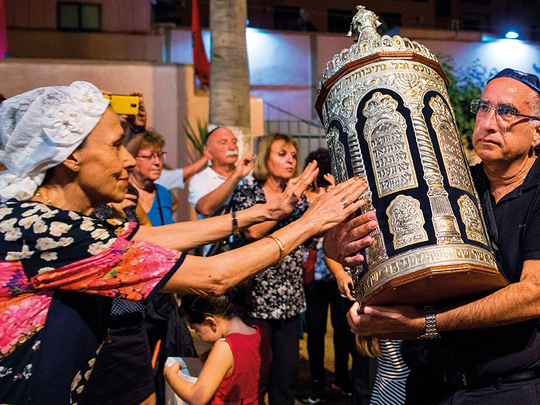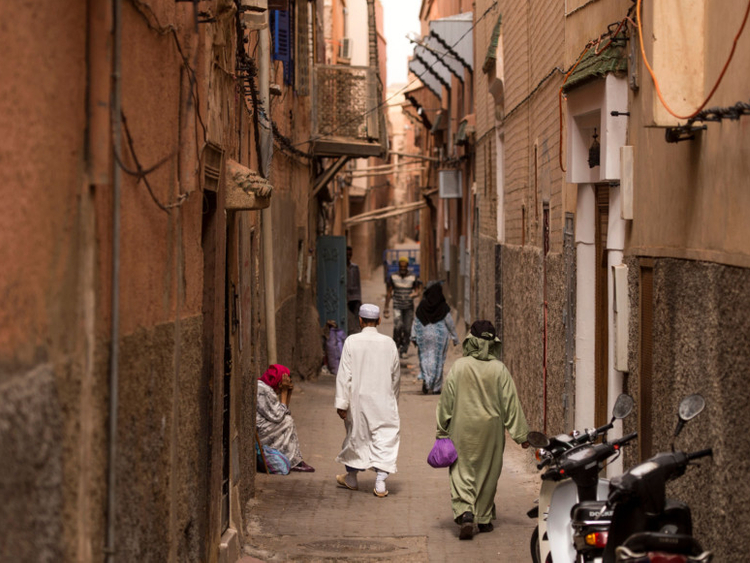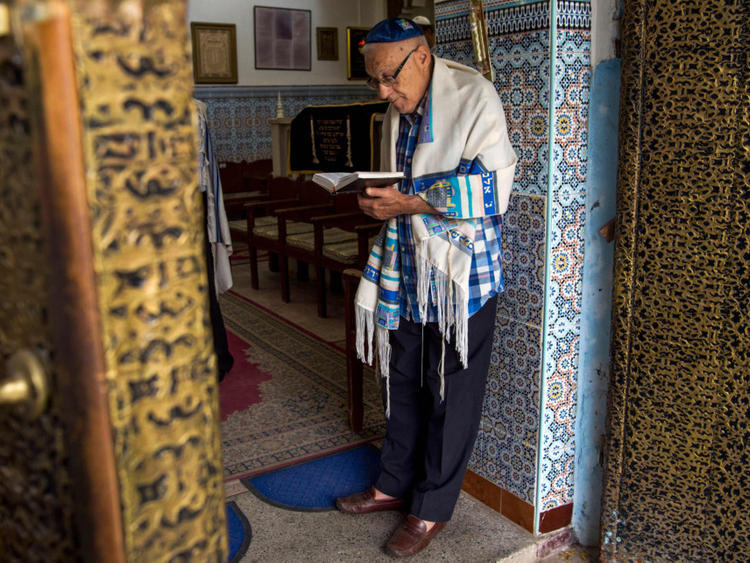
Marrakesh: The once teeming Jewish area of Moroccan tourist gem Marrakesh is seeing its fortunes revived as visitors flock to experience its unique culture and history.
“You’re now entering the last synagogue in the mellah,” the walled Jewish quarter in the heart of the ochre city, Isaac Ohayon says as he enthusiastically guides tourists in the courtyard of the Lazama synagogue.
This place of worship and study was built originally in 1492 during the Inquisition when the Jews were driven out of Spain.
Known as the “synagogue of the exiles”, it hosted generations of young Berbers who converted to Judaism and were sent from villages in the region to learn the Torah, before finally being deserted in the 1960s.
In classrooms now transformed into a museum, fading colour photographs tell the story of a now-dispersed community, with many having left.
The caption on one sepia shot of an old man sitting by a pile of trunks says it all: “They are travelling towards a dream they have prayed for for more than 2,000 years.”
Rebecca is now in her fifties and grew up in Paris, but she has “great nostalgia” for Morocco and returns as often as she can.
After Morocco’s independence (from France), King Hassan II instituted a policy of Arabisation where Jews were encouraged to leave.
Before the wave of departures, Morocco hosted North Africa’s largest Jewish community, estimated at between 250,000 and 300,000 people.
There are fewer than 3,000 left, according to unofficial figures.
Marrakesh at the foot of the Atlas mountain range was home to more than 50,000 Jews, according to a 1947 census.
Now, 70 years later, around 100 are thought to remain, many of them extremely elderly.
Jewish-owned homes inside the mellah were sold to Muslim families of modest means, and the walls of the district were eroded by time.
“Sometimes we can’t get even 10 men together for prayers,” says one woman worshipper at the old synagogue, preferring to remain anonymous.
But at celebrations marking the end of the festival of Sukkot, which commemorates the Jewish journey through the Sinai after their exodus from Egypt, and the Simchat Torah holiday, the place is buzzing with song, dance and traditional dishes.
The worshipper says she has “never seen so many people” there.
Jacob Assayag, 26, proudly calls himself “the last young Jew in Marrakesh”.
“Since the quarter was restored, there have been more and more tourists,” says the restaurateur and singer.
A restoration project begun just over two years ago has already seen €17.5 million ($20.5 million or Dh75 million) spent.
Ferblantiers Square, a large pedestrian area near the spice souq lined with benches and palm trees where tourist buses gather, also benefited from the revamp.
Twenty years ago, the quarter was renamed ‘Salaam’ (‘peace’ in Arabic), but this year saw its original ‘Al Mellah’ name restored on the orders of King Mohammad VI “to preserve its historic memory” and develop tourism.
The streets with their ochre facades once more bear their names on plaques in Hebrew: the synagogue, for example, is on Talmud Torah Street.













